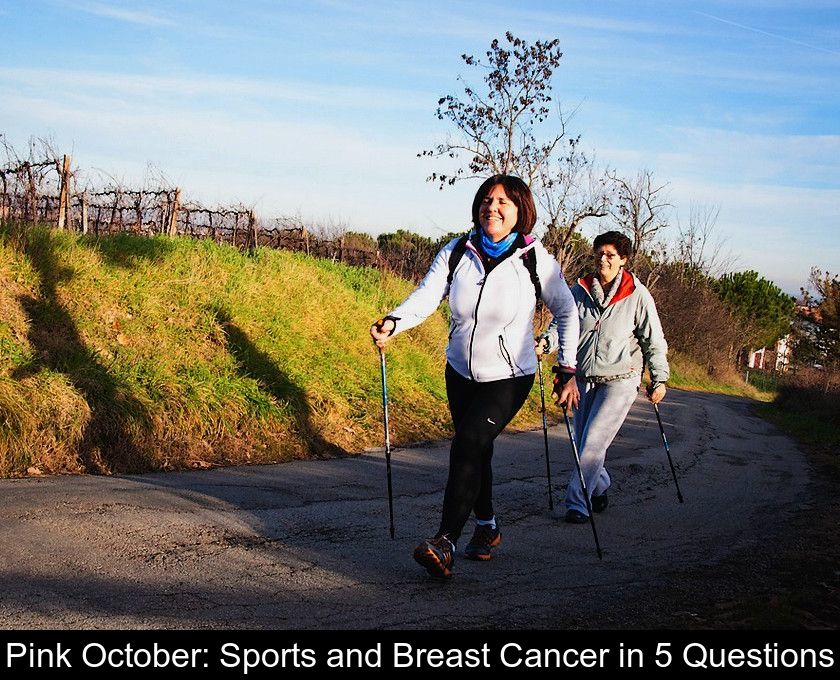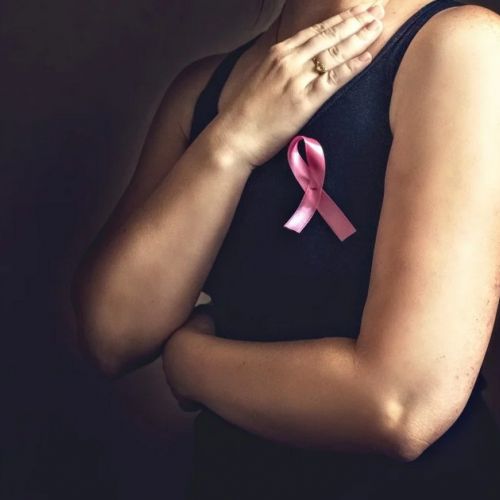Pink October: Sports And Breast Cancer In 5 Questions
On the occasion of Pink October, the most common female cancer is making headlines, with a focus on screening and prevention. For patients who are being treated or have been treated for breast cancer, this month of awareness is also an opportunity to highlight best practices. We will explain the benefits of exercising during and after treatment in 5 questions.
1- Why is exercise recommended for breast cancer?
For patients diagnosed with breast cancer, it is now recommended to stay active even during treatment.
While many of them give up on physical exercise because they feel fatigued and fear injury, doctors unanimously agree on the benefits of moving during and after treatments.
Studies have indeed shown that physical activity provides numerous benefits by improving recovery chances and reducing the risk of cancer recurrence.
2- What are the benefits of sport against breast cancer?
More specifically, physical activity has multiple benefits for women with breast cancer and for survivors of this cancer:
• Broadly speaking, physical exercise helps reduce abdominal fat and the levels of hormones involved in tumor growth.
• It also has an anti-inflammatory effect that slows cancer progression.
• Practiced during treatments, it improves the quality of life of patients and helps them better tolerate side effects such as nausea, fatigue, stress, and sleep disorders.
• It helps preserve muscle mass, preventing patients from excessive weight and strength loss, especially during chemotherapy. Significant muscle mass loss is associated with an increased risk of recurrence, mortality, loss of autonomy, and a poorer response to treatment.
• It helps maintain cardiorespiratory capacities, which also decrease due to the disease.
For all these reasons, adapted physical exercise is the best response to the overall weakening of the body related to treatments. It has been demonstrated that physical activity reduces the risk of relapse, extends life expectancy, and reduces overall mortality in patients.
According to figures published by the Cancer Research Foundation, engaging in physical exercises after a breast cancer diagnosis decreases the risk of recurrence by 24% and the risk of death from cancer by 28%.
3- Can you really exercise during cancer treatments?
Some patients exhausted by chemotherapy treatments doubt their ability to exercise. But in reality, physical activity helps to feel less tired.
This is why doctors recommend that patients force themselves to move by setting reasonable goals. One can start by going out for a 10-minute walk, then try to gradually increase the duration of the walk to 20 minutes and more.
During treatments, it is also advisable to contact specialized associations to benefit from support and a tailored physical program. To be beneficial, physical activity must be adjusted to the patient's medical journey and current physical abilities.
Adapted physical activity or APA is the best solution to move without harm during the treatment protocol but also post-cancer, when patients need to get back in shape after treatments. Adapted exercises then allow for a gentle return to physical activity and gradually regain one's abilities.
4- Which sports to practice during and after illness?
During and after breast cancer, doctors recommend engaging in various types of physical activities: muscle strengthening, as well as cardio activities and specific exercises to mobilize areas affected by surgery.
For patients wondering which sports are most suitable during their treatment, walking and gentle gymnastics can be particularly recommended because these are two activities whose intensity can be easily adjusted.
Post-cancer, exercise can be intensified by practicing Nordic walking with poles. Not only do walking poles help prevent falls, but they also contribute to strengthening the upper body, making Nordic walking a comprehensive sport.
To specifically work the shoulder and arm on the side where the breast was operated on, activities such as the following can be prioritized:
• Rowing machines in fitness centers.
• Indoor or outdoor rowing.
• Fencing, whose practice post-breast cancer has been popularized by the association Solution Riposte founded in 2014.
Regarding the amount of physical activity to engage in during and after cancer, the recommendations are the same as for all adults. Ideally, one should engage in at least 30 minutes of moderate-intensity physical activity per day, at least 5 days a week. The regularity of exercise is more important than its intensity. In other words, one should strive to move a little every day.
5- Where to go for adapted sports?
To find adapted sports classes near them, patients treated for breast cancer can inquire at sport-health centers. There are more than 400 throughout France (see the interactive map on the website below).
They can also turn to the departmental committees of the League Against Cancer as this association generally offers free physical activity classes for patients undergoing treatment.











